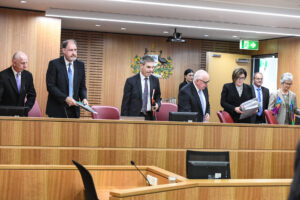While the headline news of 3.4% GDP growth in the December quarter of 2021 might suggest the economy is bouncing back, Greg Jericho, Policy Director for the Centre for Future Work, has found that the national accounts reveal just how badly workers are missing out.
In the last three months of last year, households in NSW, Victoria and the ACT came out of lockdowns and spent money propelling almost all of the economy growth in the economy.
But while households are providing all the growth, workers are missing out on the rewards. The share of GDP going to employees hit a record low in 2021 and as government stimulus begins to be withdrawn the picture is not as optimistic as the (erratic) quarterly growth figures might suggest.
Please see Greg’s full commentary in The Guardian: “Don’t get too excited by Australia’s rebounding economy – it’s a distorted snapshot of the true picture.”
You might also like
The continuing irrelevance of minimum wages to future inflation
Minimum and award wages should grow by 5 to 9 per cent this year
Want to lift workers’ productivity? Let’s start with their bosses
Business representatives sit down today with government and others to talk about productivity. Who, according to those business representatives, will need to change the way they do things?
Feeling hopeless? You’re not alone. The untold story behind Australia’s plummeting standard of living
A new report on Australia’s standard of living has found that low real wages, underfunded public services and skyrocketing prices have left many families experiencing hardship and hopelessness.


